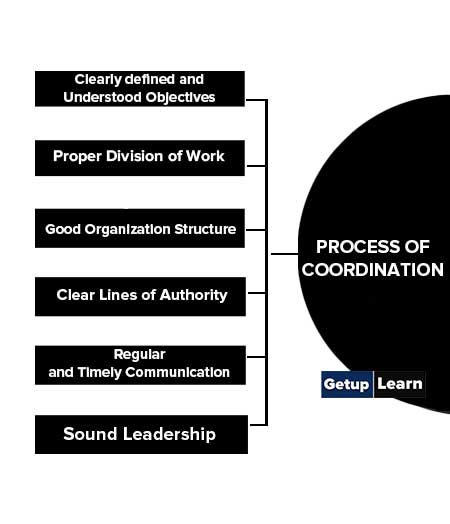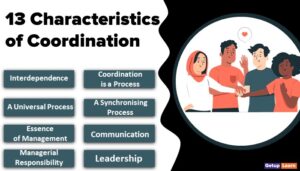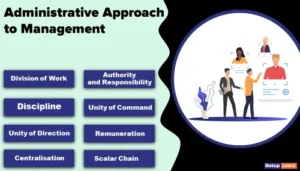Table of Contents
What is Coordinating?
Coordination harmonizes synchronizes and unifies individual efforts for better action and for the achievement of business objectives.

Coordination is the essence of management. Some writers in the area of administration and management consider Coordination as a separate managerial function.
However, coordination might be considered as an essential part of all the managerial functions of planning, organizing, directing and controlling. It is a managerial activity which is needed at all levels of management.
Coordinating is the process of harmonization of different activities within the enterprise with reference to time, the progress of work, performance standards etc. It is the essence of management. It ensures that all groups and persons work efficiently, economically and in harmony.
Coordination requires effective channels of communication. Person-to-person communication is most effective for coordination. All personnel and departmental activities are directed towards achieving the common goals of the organization.
The management of a modern enterprise is based on the principle of specialization or division of labour. Jobs are broken down into single repetitive tasks and are entrusted to individuals either working in the same department or in different departments.
To attain the desired results with so much diversification, coordination becomes necessary. So, Coordination is the management of interdependence in work situations. Coordination leads to blending the activities of different individuals and groups of individuals for the achievement of certain objectives.
In an enterprise which consists of a number of departments, such as production, purchase, sales, finance etc. there is a need for all of them to work in synchronization and achieve the organizational objectives.
Importance of Coordination
When a number of people are working to carry out a task, coordination is the only method of synchronization. Through coordination, duplication of work and excessive burden on a single department can be eliminated. The task of coordination is becoming increasingly complex and difficult.
These are the same importance of coordination given below:
Division of Labour
When managers divide work into specialized functions or departments, they at the same time create a need for coordination for these activities. Greater the division of labour, the greater the need for coordination.
Growth in Size
With the growth in the size of an enterprise and the large employment of people, the task of integrating the activities becomes more complicated. To achieve the desired results it’s important to harmonize individual goals with organisational goals through coordination.
Interdependence of Units
The need for coordination in an organization also arises because of the interdependence of various units. Greater the interdependence of the units, the greater the need for coordination.
As the entire department has its own set of policies and procedures, but to achieve the organization’s goals the activities of various departments, have to be coordinated.
Growing Specialization
Modern business has become increasingly complex as various functions are to be performed by specialists. Specialization brings about the need for more coordination because of the diversity of tasks to be performed.
Principles of Coordination
Coordination refers to the process of organizing and aligning the activities and efforts of individuals or groups in order to achieve a common goal. Coordination is a critical aspect of effective teamwork and organizational success. There are several principles that can help to facilitate coordination within a team or organization:
- Principle of Direct Contact
- Early Stage
- Reciprocal Relationship
- Principle of Continuity
- Principle of Self-Coordination
Principle of Direct Contact
In the first principle, Mary Parker states that coordination can be achieved by direct contact among the responsible people concerned. She believes that coordination can be easily obtained by direct interpersonal relationships and direct personal communications.
Early Stage
Coordination should start from the very beginning of the planning process. At the time of policy formulation and objective setting, coordination can be sought from organizational participants. Obviously, when members are involved in goal-setting, the coordination problem is ninety percent solved.
Reciprocal Relationship
As the third principle, Mary states, all factors in a situation are reciprocally related. In other words, all the parts influence and are influenced by other parts.
Principle of Continuity
The fourth principle, advocated by Follet, is that coordination is a continuous and never-ending process. It is something which must go on all the time in the organization. Further, coordination is involved in every managerial function.
Principle of Self-Coordination
In addition to the four principles listed by Follet above, Brown has emphasized the principle of self-coordination. According to this principle, when a particular department affects another function or department, it is in turn, affected by the other department or function. This particular department may not be having control over the other departments.
Process of Coordination
Coordination refers to the process of aligning the actions and decisions of different individuals or groups in order to achieve a common goal. It is a critical aspect of effective teamwork and can be achieved through various means, including communication, delegation, and the establishment of clear roles and responsibilities.
- Clearly defined and Understood Objectives
- Proper Division of Work
- Good Organization Structure
- Clear Lines of Authority
- Clear Lines of Authority
- Sound Leadership
Clearly defined and Understood Objectives
Every individual and each department must understand what is expected from them by the organization. Top management must clearly state the objectives of the enterprise, as a whole. As pointed out by Terry, “there must be commonness of purpose, in order to unify efforts”. The various plans formulated in the enterprise must be interrelated and designed to fit together.
Proper Division of Work
The total work must be divided and assigned to individuals in a proper way. Here, it is worth noting the principle, a place for everything and everything in its place.
Good Organization Structure
The various departments in the organization must be grouped in such a way that work moves smoothly from one phase to another. Too much specialization may complicate the coordination work.
Authority must be delegated in a clear way. The individual must know, what is expected of him by his superior(s). Once authority is accepted, the subordinate must be made
accountable for results, in his work area. There should be no room for overlapping of authority and wastage of effort(s).
Regular and Timely Communication
Personal contact is generally considered to be the most effective means of communication for achieving coordination. Other means of communication such as records, and reports, may also be used in order to supply timely and accurate information to various groups in an organization. As far as possible, common nomenclature may be used so that individuals communicate in the ‘same language’.
Sound Leadership
According to McFarland, real coordination can be achieved only through effective leadership. Top management, to this end, must be able to provide (i) a conducive work environment, (ii) proper allocation of work, (iii) incentives for good work, etc. It must persuade subordinates, to have the identity of interests and to adopt a common outlook.
Types of Coordination
Coordination refers to the process of bringing people or groups together to work towards a common goal or objective. There are several different types of coordination that can be used in different situations:
Internal and External Coordination
Coordination between the different units of an organization is called ‘internal coordination’. It involves synchronization of the activities and efforts of individuals, in various departments, plants and offices of an organization.
The coordination between an organization and its external environment, consisting of government, customers, investors, suppliers, competitors, etc., is known as ‘external coordination’. No organization operates in isolation. In order to survive and succeed, it must set its house in order, and interact with outside forces in a friendly way.
Vertical and Horizontal Coordination
Coordination between different levels of an organization is called ‘vertical coordination’. It is achieved by top management, through delegation of authority.
When coordination is brought between various positions, at the same level in the organization (i.e., between production, sales, finance, personnel, etc.) it is called ‘horizontal coordination’. Horizontal coordination is achieved through mutual consultations and cooperation.
Features of Coordination
Coordination refers to the process of aligning the actions, behaviors, and decisions of different individuals or groups in order to achieve a common goal or objective.
Coordination involves establishing a clear understanding of roles, responsibilities, and expectations among the members of a group, and establishing effective communication channels to facilitate the exchange of information and ideas. Some key features of coordination include:
- Clear Goals and Objectives
- Integrates Group Effort
- Ensures Unity of Action
- Communication
- Continuous Process
- Collaboration
- Coordination Mechanisms
- Responsibility of All Managers
- Deliberate Function

Clear Goals and Objectives
Coordination requires that all parties involved have a clear understanding of the goals and objectives they are working towards. This helps to ensure that everyone is working towards the same objectives and that their efforts are aligned.
Integrates Group Effort
The need for Coordination is felt when group effort is needed for the accomplishment of an objective. In short, it can be said that Coordination is related to group effort and not individual effort. The question of Coordination does not arise, if the job is done by one person only.
Ensures Unity of Action
The nature of Coordination is of creating unity in action. It means during coordinating process an effort is made to create unity among the various activities of an organisation. For example, the purchase and sales departments have tocoordinate their efforts so that supply of goods takes place according to purchase orders.
Communication
Effective communication is essential for coordination. This includes both verbal and nonverbal communication, as well as the use of various communication channels and technologies.
Continuous Process
It is not a job which can be performed once and for all, but its need is felt at every step. Many activities are performed in a business. Sometimes or the other, if any one of the activities goes on fluctuating either for more or less than required, the whole organisational balance is disrupted. Thus, a close watch has to be kept on all the activities to maintain the balance.
Collaboration
Collaboration is an important aspect of coordination, as it involves actively working together and combining efforts to achieve a shared objective. This may involve brainstorming and problem-solving, as well as decision-making and goal-setting.
Coordination Mechanisms
There are various mechanisms that can be used to facilitate coordination, such as meetings, task assignments, and project management tools. These mechanisms help to ensure that all parties are on the same page and that tasks are being completed efficiently and effectively.
Responsibility of All Managers
Coordination is the responsibility of all managers: Coordination is needed at all the three, i.e., top, middle and lower managerial levels. Different activities performed at all the levels are equally important.
Thus it is the responsibility of all the managers that they make efforts to establish Coordination. That is why, it could not be said that Coordination is of more importance to any one particular managerial level or a manager.
Deliberate Function
Coordination is a deliberate function: Coordination is never established by itself but it is a deliberate effort. Only cooperation does not suffice but Coordination is also needed. For example, a teacher aspires to teach effectively (this is cooperation) but the timetable is not prepared in the school (this is lack of Coordination).
In this situation, classes cannot be arranged for. Here, the effort made by the teacher is meaningless, in the absence of Coordination. On the other hand, in the absence of cooperation and Coordination it dissatisfies the employees. Thus, both are required at a given point of time.
Needs of Coordination
These are the needs of coordination given below:
- The opinions of the individuals differ and that creates a problem in achieving the goals of the organisation.
- There may be a clash in the objectives before the individuals and those of the enterprise. 3. To avoid breaking efforts on the part of the employees.
- To secure a combined effort that may be greater than the sum total of the individual achievement.
- To resolve conflicts such as between line executives and the staff.
- Coordinate the goals of the subordinate departments to those of the enterprise as a whole.
- To ensure the harmonious functioning of the organisation as a whole.
What is the meaning of coordinating?
Coordinating is the process of harmonization of different activities within the enterprise with reference to time, the progress of work, performance standards etc. It is the essence of management. It ensures that all groups and persons work efficiently, economically and in harmony.
What is the importance of coordination?
The following is the importance of coordination:
1. Division of Labour
2. Growth in Size
3. Interdependence of Units
4. Growing Specialization.
What are the principles of coordination?
The following are principles of coordination:
1. Principle of Direct Contact
2. Early Stage
3. Reciprocal Relationship
4. Principle of Continuity
5. Principle of Self-Coordination.
What are the process of coordination?
The following are the steps of process of coordination:
1. Clearly defined and Understood Objectives
2. Proper Division of Work
3. Good Organization Structure
4. Clear Lines of Authority
5. Regular and Timely Communication
6. Sound Leadership.
What are the features of coordination?
The following are the features of coordination:
1. Clear Goals and Objectives
2. Integrates Group Effort
3. Ensures Unity of Action
4. Communication
5. Continuous Process
6. Collaboration
7. Coordination Mechanisms
8. Responsibility of All Managers
9. Deliberate Function.




















